The core is the underpinning musculoskeletal structure for maintaining the postural stance and allowing for optimal functioning of the surrounding limbs. Developing strong and stable core muscles, can allow for improved performance on the bike and reduced injury risk. Therefore, in this article I will be outlining the structure of the core muscles in addition to providing benefits of core training, and consequently how to incorporate core training into one’s cycling routine.
During the off-season, rainy or cold months of the year, it can often be daunting and unmotivating to leave the house for a ride. As such, consistent training on the bike every day of the year can often lead to burnout, making the sport stale.
Therefore, the most sensible approach to winter training is to ‘train to ride, and not ride to train’. Essentially, the winter days should be devoted towards improving base fitness, mobility, muscle strength, and most importantly, creating a strong & stable core musculature. Additionally, the winter months can often be a period of a reduced training load, allowing for time to be devoted towards cross training, winter sports, leisure activity and spending time with family.
Why are the Core Muscles Important for Cycling?
The ‘core’ is often referred to the foundation of the human musculoskeletal system. Anecdotally, the core can be compared to foundation bricks of a house – without the foundations, the structure will cease to exist.
Contrary to common belief, the core does not refer to stereotypical ‘abs’ that are visible to the human eye. However, whilst the core includes the abdominals, much of the muscles are situated around the trunk and hip region, often referred to the lumbopelvic hip complex.
Although the term ‘core’ refers to a broad group of muscles, from an anatomical perspective, the core stabilisers can be placed into two categories [1]:
- Local stabilisation system
- Global stabilisation system
The local stabilisers consist of a group of muscles that are attached to or near the vertebrae, acting to eccentrically control movement and stabilise the spine in a static position [1]. Essentially, when the body is not producing large amounts of force, the local stabilisers are responsible for ensuring spinal stability.
In contrast, the global stabilisers are attached to the trunk and consist of muscles that are situated superficially, playing the role of producing large amounts of force in a concentric manner [1]. Simply, movements such as jumping require the global stabilisers to produce force through the shortening of the muscles.
As such, to produce quality movement patterns, the local stabilisation system must be activated and resistant to force before large amounts of torque is generated through the global stabilisation system [1]. Therefore, it is integral for athletes of all levels to ensure the local stabilisation system is strong, thereby supporting the spine [1].
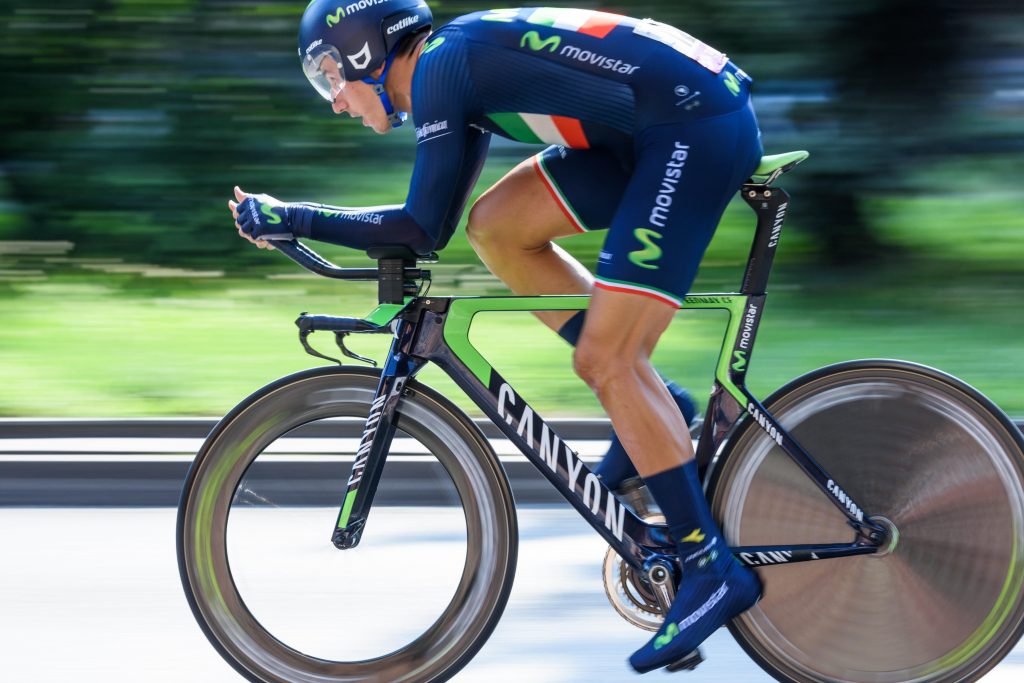
Weak Core Muscles Lead to Injury
Poor functioning of the core muscles can often be the cause of lower back pain, on and off the bike, due to the delayed activity of the local stabilising muscles [1]. As a result, athletes tend to perform large and powerful movements without ample spinal support, thereby causing injury [1].
Current research suggests that poor endurance of the core muscles can lead to overuse injuries in the lower extremity [2]. In turn, a dysfunctional core can cause cyclists to overexert their lower extremity due a lack of core stability and strength, thereby inhibiting the required muscles to contract appropriately [2]. Additionally, weak core strength can result in poor cycling posture and technique, thereby causing the onset of both fatigue and injury [3].
Improved Performance and Power
Given the aerodynamic position on a road bike, the core muscles are responsible for ensuring the lower back and pelvis remain stable to allow for a sustained position [3]. In turn, a fatigue resistant core can allow for efficient power transfer through to the legs, without excessive use of upper body to maintain position [3].
In addition, studies have revealed a shift in postural dynamics when the body adjusts to greater pedalling workloads [3]. As power output increases, the natural tendency of the body is to slide towards the nose of the saddle to produce more torque on the cranks [3]. In turn, the forward position results in a loss of saddle support [3]. As a result, the forward shifting in centre of gravity over the bike requires additional core strength to sustain the position [3].
Essentially, energy and power is lost due the additional demands placed onto the core and upper body to maintain an ideal position [3]. As such, a common symptom is tricep brachii, posterior neck and shoulder fatigue, where the muscles in the posterior region of the upper body become fatigued due to supporting too much body weight over the front end of the bike. However, a stable core can off-load the upper body, whilst improving pedalling efficiency [3,4]. Consequently, a stable core promotes a balanced pedal stroke, during the power and recovery phases, thereby improving performance and endurance [4].
Related: How to Build Cycling Endurance: Ride Longer With Less Fatigue.
How to Improve Cycling Core Strength and Stability
Through the use of inexpensive gym equipment, common home furniture and body weight, core stability training for cyclists can improve overall comfort, power, endurance, and enjoyment on the bike from the comfort of one’s own home.
Core stability training should be treated with equal importance to cycling. While the winter is an appropriate time to improve muscle deficiencies, core stability should not be neglected during the summer months.
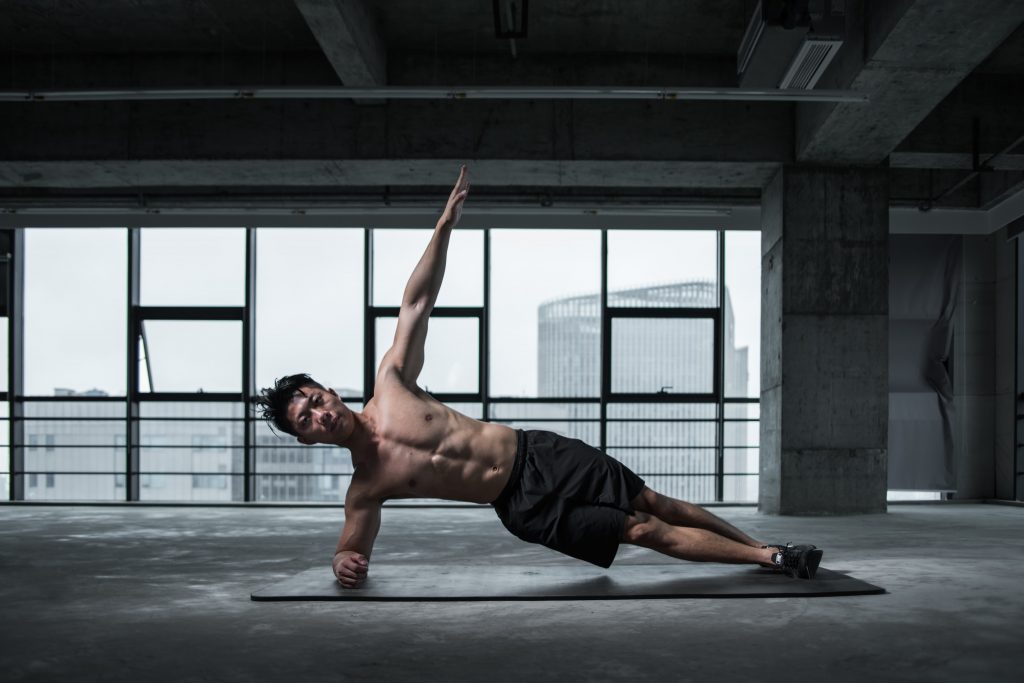
Improving core stability for cycling should reflect the nature of riding, focusing on building stability and endurance [3]. Exercises that focus on overall core stability such planks target the entire core musculature [3].
That is to say that core training is not limited to the common plank exercise, rather challenging the core muscles through decreasing stability at the feet, hands, or arms, can replicate the dynamics of cycling on the road [3]. Exercises such as Swiss Ball and Side Planks reduce stability, providing a greater training stimulus [3]. Importantly, the nature of cycling neglects the sagittal plane, whereby performing Side Planks can improve stability through the sagittal plane.
Cycling Specific Core Exercises
With an introduction to, and understanding of the importance of the core muscles and how they interact with each pedal stroke, it is important to integrate cycling specific exercises to improve core stability on the bike. Engaging and activating the core muscles can be a difficult action for many amateur athletes. Therefore, it is important to first learn how to activate the core muscles.
For beginner athletes or cyclists who do not train the core, incorporating neuromuscular and muscle recruitment exercises can ‘switch on’ the core muscles [1]. The scientifically reliable technique of bracing allows for athletes to recruit the local stabilisation system [1].
To brace the core, practice the cues below to assist with engaging the core muscles:
- Stiffen your stomach as if your about to rebound a soccer ball or to get punched by someone
- Cough, and place your hands on your stomach and feel it harden
Once you have tried the above exercises and discovered that you ‘actually’ have core muscles, practice tightening and maintaining a stiff core. After you have mastered activating the core, progressing to strengthening exercises can enable improved muscle endurance [1].
The Plank
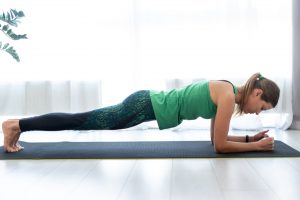
Bicycle Crunches
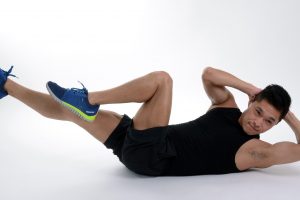
Glute Bridge
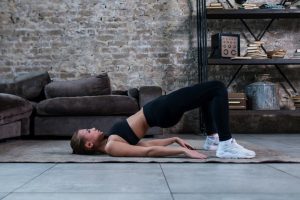
The Takeaway
While cycling is an enjoyable and social sport, it is important to remember that the riding position requires the core muscles to stabilise the spine. Keep in mind that core training can be done in a fun and innovative manner, with family, children and friends. Through incorporating core training throughout the year, not only will power and efficiency improve, rather comfort and longevity on the bike in the years to come.
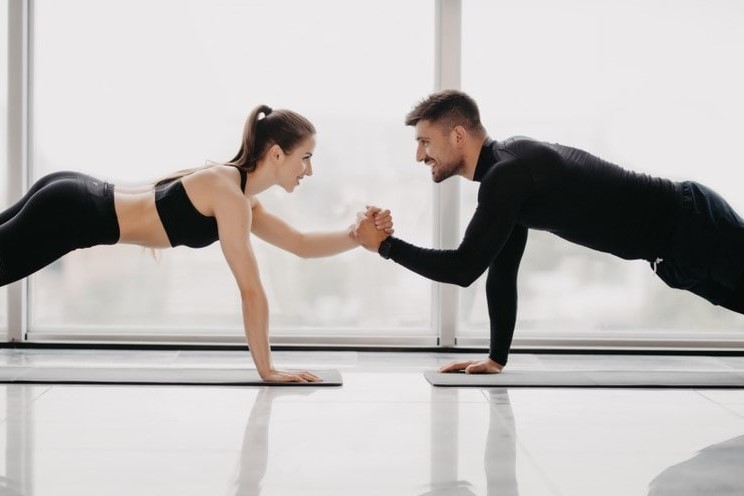
References:
[1]K. Huxel Bliven and B. Anderson, “Core Stability Training for Injury Prevention”, Sports Health: A Multidisciplinary Approach, vol. 5, no. 6, pp. 514-522, 2013. Available: 10.1177/1941738113481200.
[2]C. De Blaiser, R. De Ridder, T. Willems, L. Vanden Bossche, L. Danneels, and P. Roosen, “Impaired Core Stability as a Risk Factor for the Development of Lower Extremity Overuse Injuries: A Prospective Cohort Study,” American Journal of Sports Medicine, vol. 47, no. 7, pp. 1713–1721, Jun. 2019, doi: 10.1177/0363546519837724.
[3] C. Asplund and M. Ross, “Core Stability and Bicycling,” Current Sports Medicine Reports, vol. 9, no. 3, pp. 155–160, Jun. 2010, doi: 10.1249/JSR.0b013e3181de0f91.
[4] J. Smoliga, “Relationship Between Cycling Mechanics and Core Stability,” The Journal of Strength and Conditioning Research, Accessed: Apr. 22, 2021. [Online]. Available: https://www.academia.edu/19178777/Relationship_Between_Cycling_Mechanics_and_Core_Stability.

